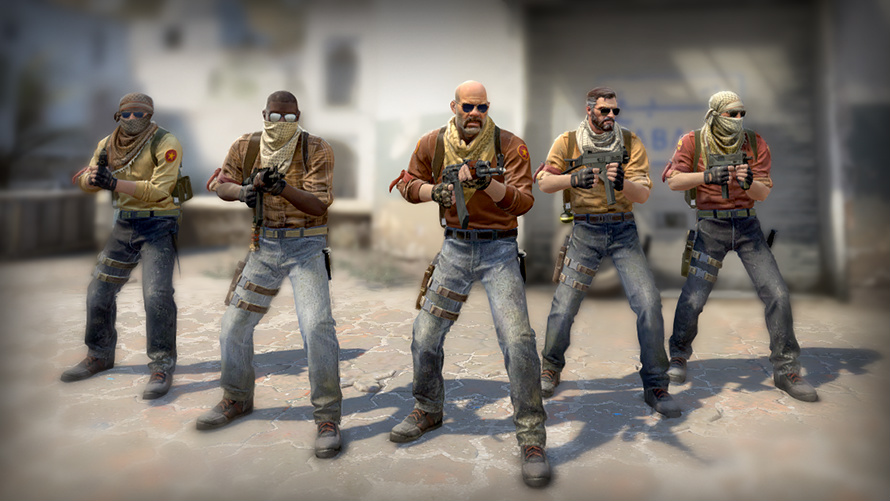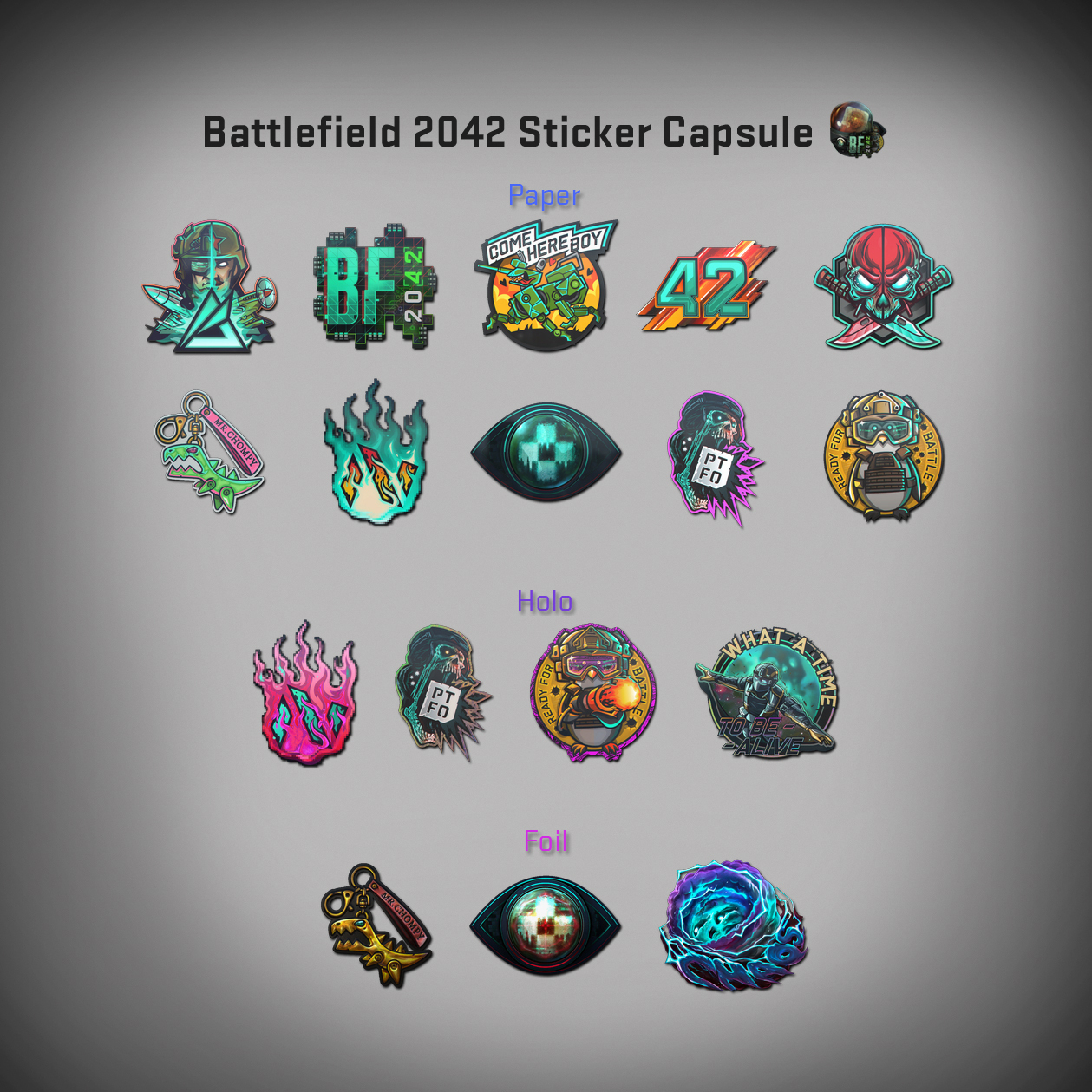Counter-Strike gets stickers for... Battlefield 2042?
We'll all be watching Ariana Grande concerts in Dust_2 soon no doubt.

Valve has released a bunch of stickers for Counter-Strike: Global Offensive that, rather bizarrely, are themed around Battlefield 2042 iconography. Stickers in CS:GO come in capsules which you have to buy a capsule key to open: after which you'll get one of twelve Battlefield 2042 stickers of varying rarity. The dinosaur one is quite cool to be fair, though of course it's one of the rarest!
I call it bizarre because, while they're not exactly like-for-like, Battlefield and Counter-Strike are competitors: this is a bit like seeing Coke advertise Pepsi. The collaboration came with brand account tweets tagging in the other, with the Battlefield account posting: "CS:GO love us so much, they put us in their game as a sticker capsule. We love them so much, de_dust2042 is basically Hourglass." Branter in my Counter-Strike. I wonder how much EA paid for this.

The reaction to the capsules is either summed up by the first comment on the Steam post about it ("lul") or the usual list of stuff CS: GO players go on about whenever anything happens: where's the 128 tick servers! Volvo pls.
This isn't the first time Valve's done a crossover with another shooter with cosmetics: there was a Halo-themed capsule a few years back. That wasn't done to promote a new Halo game, though perhaps I'm splitting hairs. I'm just a grumpy old man who finds Battlefield stickers in Counter-Strike an odd idea.
Keep up to date with the most important stories and the best deals, as picked by the PC Gamer team.

Rich is a games journalist with 15 years' experience, beginning his career on Edge magazine before working for a wide range of outlets, including Ars Technica, Eurogamer, GamesRadar+, Gamespot, the Guardian, IGN, the New Statesman, Polygon, and Vice. He was the editor of Kotaku UK, the UK arm of Kotaku, for three years before joining PC Gamer. He is the author of a Brief History of Video Games, a full history of the medium, which the Midwest Book Review described as "[a] must-read for serious minded game historians and curious video game connoisseurs alike."

